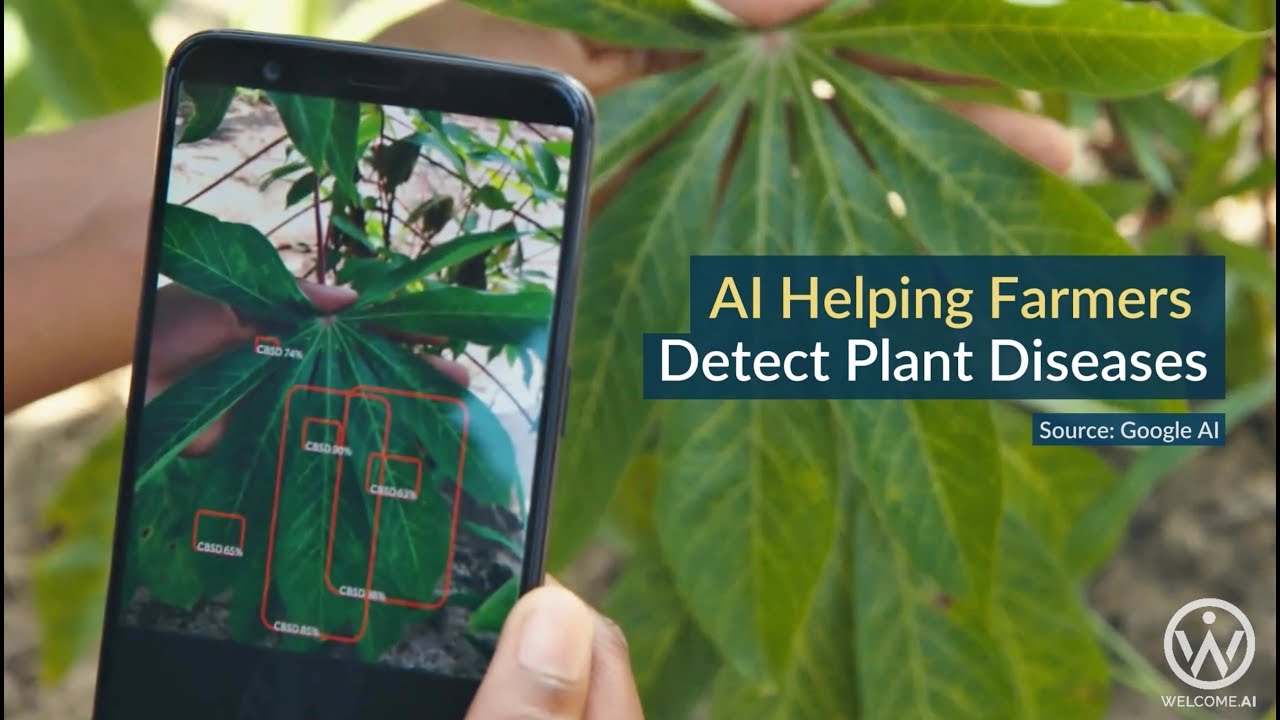
Practical Plant Disease Diagnostics
PLANT DISEASE DIAGNOSTIC TECHNIQUES: STUDY OF SYMPTOMTOLOGY (SYMPTOMS,
SIGN, SYNDROME, INFECTIOUS AND NON INFECTIOUS DISEASES)
This topic is a practical introduction to symptomology with an outlook to prepare for
diagnostic work.
Plant disease diagnosis is the identification of nature and cause of diseases based
on signs and symptoms. Identification of symptoms and signs and comparative
symptomologies of infectious and non infectious diseases are considered to be most
essential for diagnosis of a unknown plant diseases. The presence of the pathogens or
various structures viz., mycelium, sclerotia, sporophores and spores produced on the
surface of the host are called signs whereas symptoms refer to only to the appearance of
infected plants or plant tissues.
Diagnosis of a plant disease is one of the most important and useful techniques in
plant pathology and familiarity with the basic classification of plant diseases, the
characteristics of organisms that cause a particular diseases, the symptoms and signs
associated with different types of disease is a pre-requisite to diagnose a plant disease.
Majority of plant diseases can be diagnosed by a relatively straight-forward procedure
involving an evaluation of background information and a macroscopic and often
microscopic examination of diseases plant. However, some diseases can be diagnosed
correctly through the use of electron microscope and serology. A majority of abiotic and
biotic factors may cause similar disease symptoms and the best proof that a particular
organism is the cause of disease is fulfilment of Koch’s postulates. Koch's postulates are
performed infrequently, except when the disease agent is suspected to be new and
previously unreported .Most of the plant disease diagnoses done today involve
identification of plant diseases that have been previously described and named. Several
techniques may be performed to determine the identity of diseases. Visual studies of
symptoms and signs, microscopy, culture media studies and serology techniques are the
most frequently used techniques in diagnostic clinics.
Identification of nature of a disease
In determination of a plant disease the first step is to determine the infectious and
non infectious nature of the disease.
Infectious diseases
An infectious disease will spread to other plants in the field by various means and is
characterized by the presence of pathogens on the surface of the plants or inside the
plant. In diseases caused by pathogens viz., fungi, bacteria, nematodes, viruses,
mollicutes, a few or large numbers of these pathogens may be present on the surface of
the plants or inside the plants. The presence of such pathogens in an active state on the
surface of a plant indicates that they are probably the cause of the diseases. Their
detection and identification can be determined with the experienced naked eye or with a
magnifying lens and if no such pathogens are present on the surface of a diseased
plants then it will be necessary to look for additional symptoms, especially for pathogens
inside the diseased plant. Such pathogens are usually at the margins of the affected
tissues, in vascular tissues or at the base of the plant or roots. Certain infectious
pathogens like viruses are neither seen nor can be grown on artificial media. They
produce symptoms similar to those resulting from nutritional deficiencies.
Non infectious diseases
These are the diseases with which no parasite is associated; hence they are called
as abiotic diseases. They remain non infectious and cannot be transmitted from diseased
plant to healthy plant. If no organism is found in association with the diseased part and if
viral symptoms are not present, the diseases may be due to inanimate cause. If
symptoms look like those of nutritional deficiencies the identification can be confirmed by
spraying a solution of the possible element in its salt form and usually recovery will occur
within a week and identification can be confirmed. These non parasitic, non infectious
diseases are due to disturbances in the plant body caused by lack of proper
environmental conditions of soil and air, low and very high temperatures, unfavourable
oxygen relations, unfavourable soil moisture, pH, presence of toxic gases in the
atmosphere, mineral excess and deficiencies in the soil etc., are the major causes of non
parasitic diseases.
Examples
Low temperature : potato tuber injury
High temperature : blossom end rot of citrus fruit
Effect of light : bean scald
Excessive moisture: blossom end rot of tomato
Low oxygen : black heart of potato
Air pollution : ozone on corn
Chemical injury : ammonia on apple
Herbicide injury : 2, 4-D on dicot leaf
Nutrient deficiency: Zn on citrus
Steps in disease diagnosis
The basic steps involved in plant disease diagnosis are as follows.
1. Obtain background information on host and disease
· Description of the problem
· Identification of host cultivar
· Planting date
· Source of seed
· Habitat of diseased plant
· Soil type
· Cultural practices
· Disease history
· Environmental conditions
· Pattern of disease
2. Obtain a good sample of diseased plant or its parts.
Fresh sample in various stages of diseases development
3. Examine the plant and describe
· Signs/symptoms of disease
· Plant parts affected
· Most common symptom
· Visible signs of the pathogen
By critical examination of sign and symptoms produced in the plant one can identify the
broad group to which the causal agent belongs.
4. Obtain literature description regarding the disease for the particular host
5. Identify the disease by comparing your description of disease with published
description.
Exercise: Identification of symptoms and signs: Categories of specimens to provide
1. Necrotic: Blight, damping off, leaf spot, root rot.
2. Colour change: mosaic,
3. Wilt: vascular wilts
4. Hyper-plastic: club root, scab, root knot nematode
5. Hypo-plastic: yellows
Materials for work on signs
6. Bacterial: Wilt (vascular plugging), blight (ooze)
7. Fungal: Powdery mildew (mycelium), Sclerotia, rusts, smuts, Nematodes (root
knot galls).


